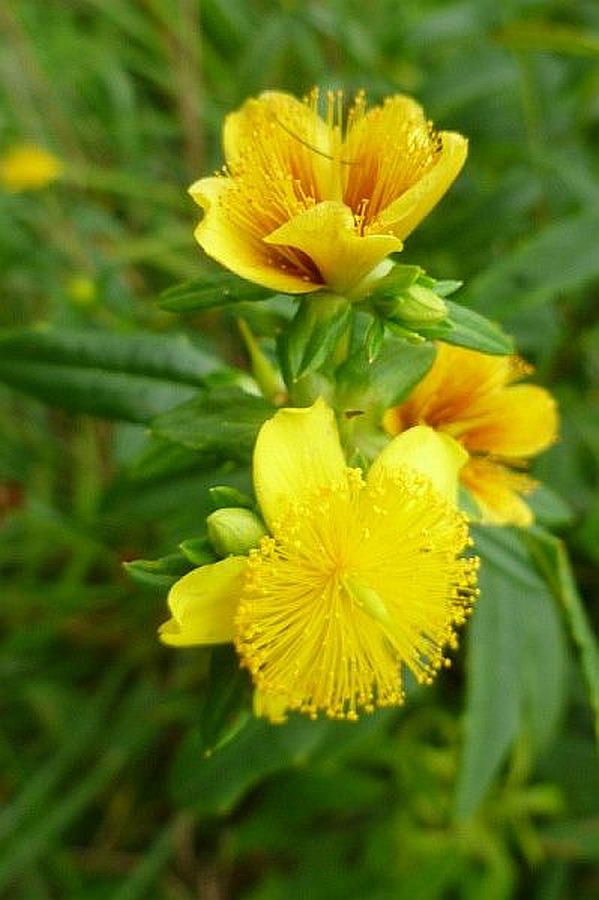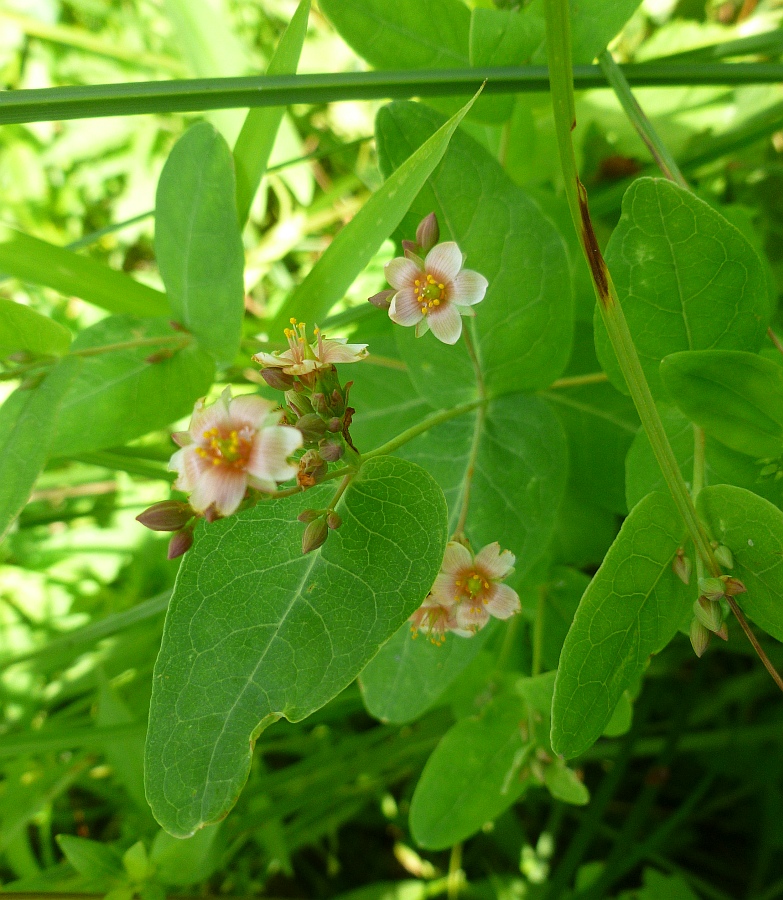
28 July 2012
Pictured above is shrubby St John’s wort (Hypericum prolificum), one of the many plants that share my last name.
Most St John’s worts are in the Hypericum genus including common St John’s wort (Hypericum perforatum) which was named “St. John” in Europe because its root was harvested for medicinal and folklore purposes on St. John the Baptist Day, June 24.
“Wort” is an Old English word meaning “root” that appears in the names of many plants including bellwort, bladderwort, golden ragwort, hogwort, toothwort and miterwort. Sometimes it means “plant” instead of root, as in the name of liverwort that was incorrectly thought to cure liver ailments.
As time passed the “St John’s wort” name spread to plants outside the Hypericum genus. In North America, Marsh St Johns wort (Triadenum virginicum), pictured below, is not a Hypericum and is not even yellow.

Naming is a fluid thing.
(photos by Dianne Machesney)
And here I am, stuck with English Ivy
According to the Doctrine of Signatures, a plants superficial form was taken as a sign from God that it could be used to treat whatever body part it resembled. Liverwort resembled the lobes of a liver, and toothwort’s leaf margin resembled the outline of teeth. So I would bet the forms of these plants dictated the names as well as their putative use.
William Cole wrote “The little holes whereof the leaves of Saint Johns wort are full, doe resemble all the pores of the skin and therefore it is profitable for all hurts and wounds that can happen thereunto.”
All info from Wikipedia Doctrines of Signature page.